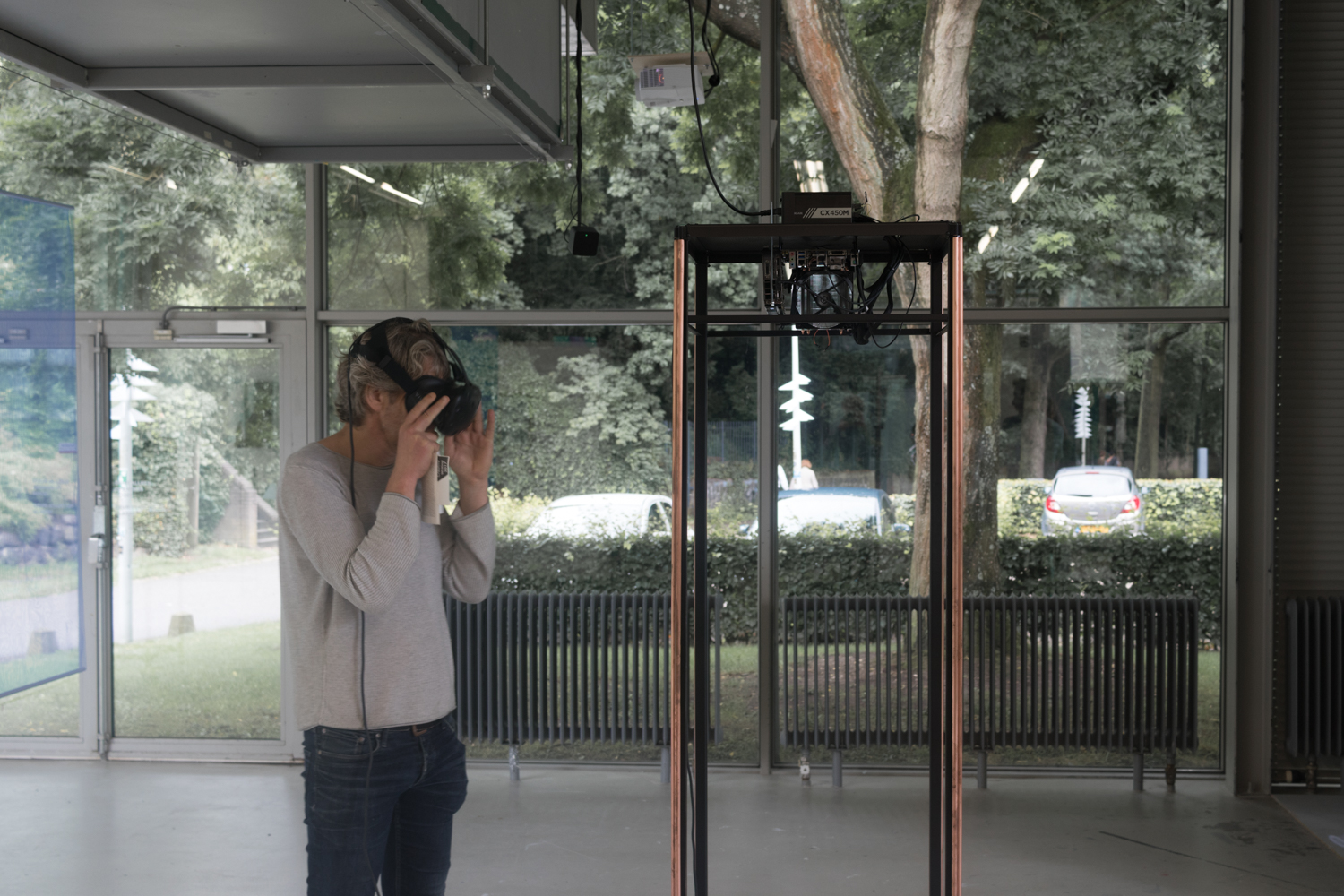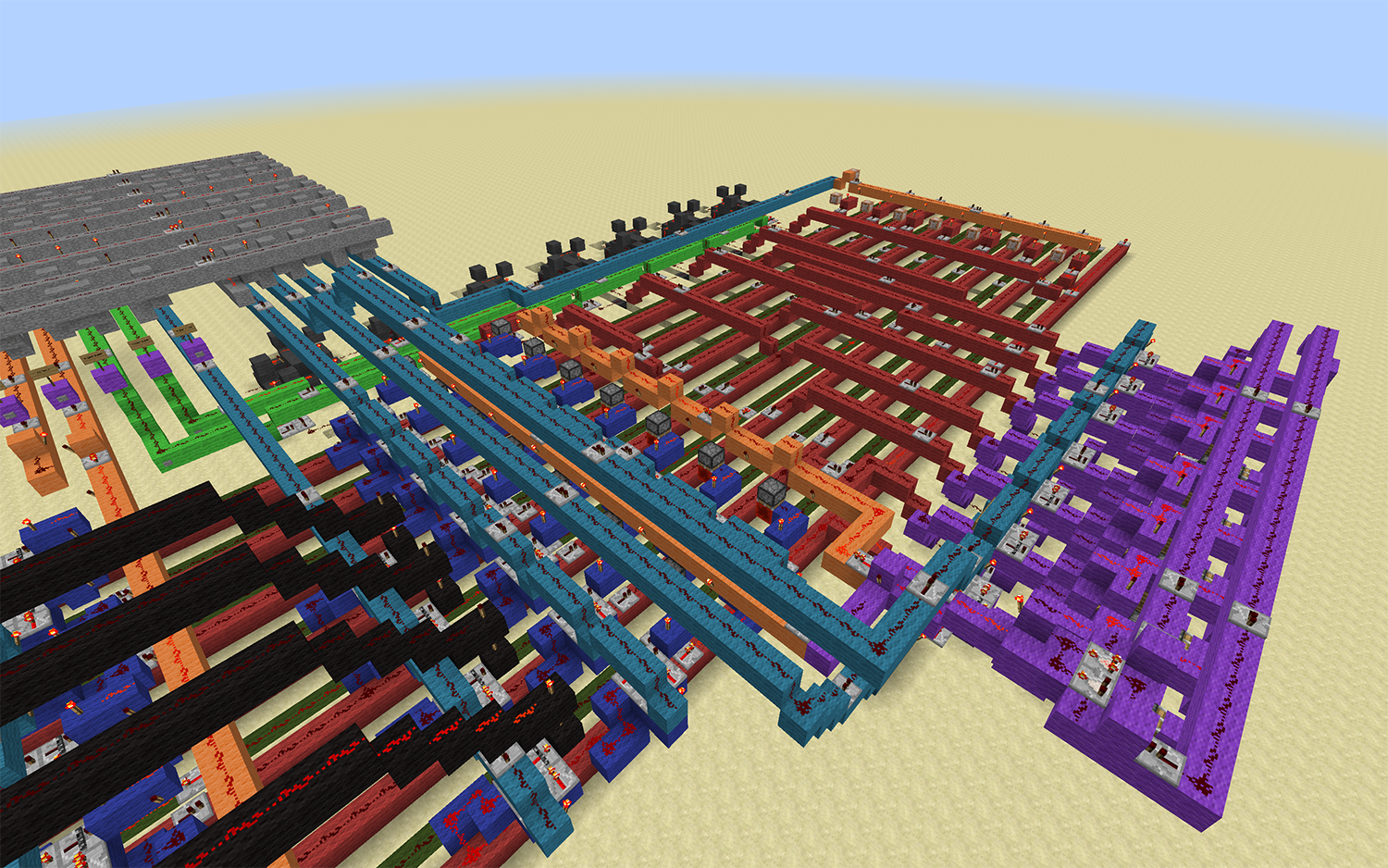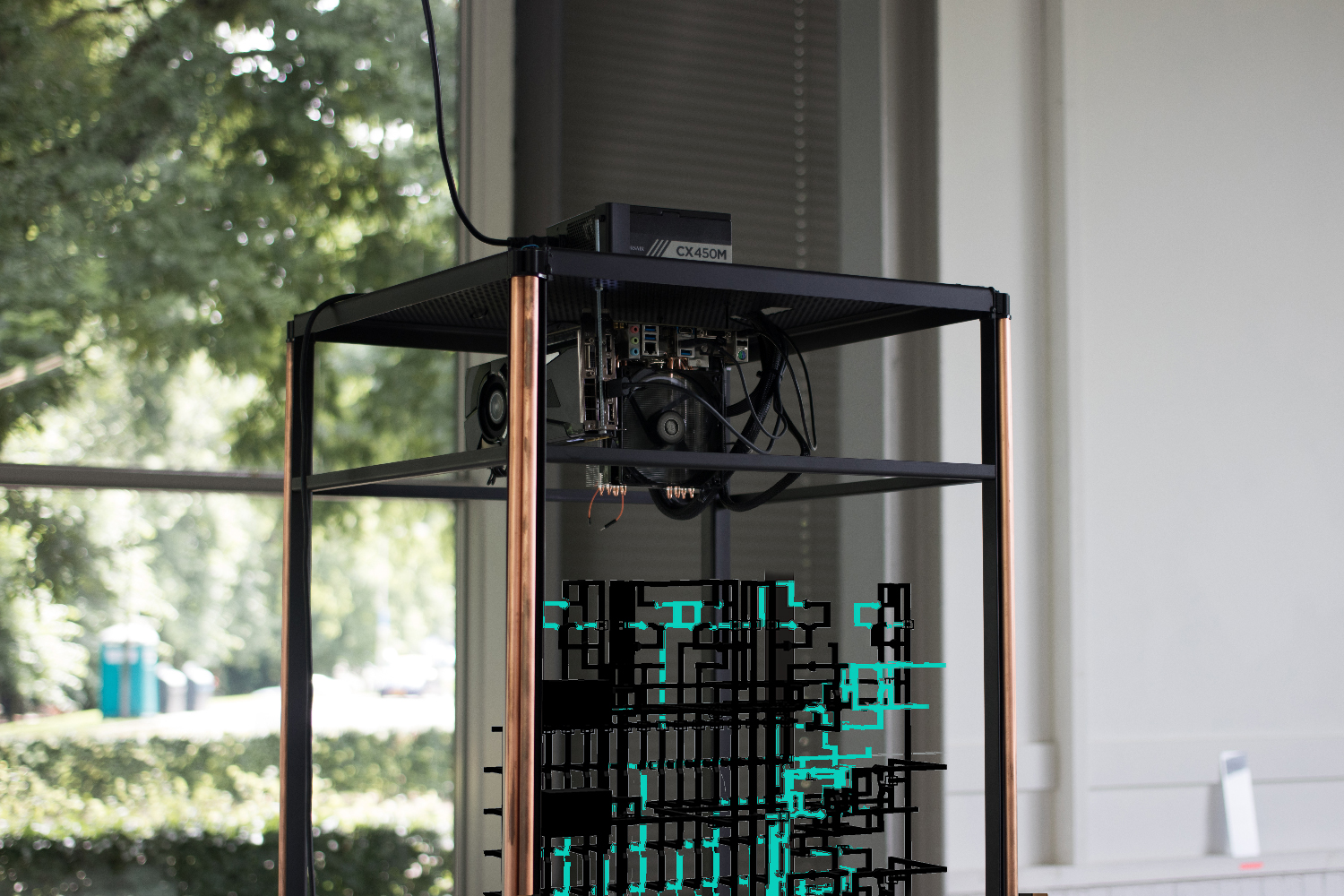
Immersive Computing
General purpose computing has taken the world by storm in the last three decades, turning our planet into a enormous network of computers. All of this computing is powered by extremely tiny micro devices. These processors are the main hub for all these computational processes. They power a wide range of different activities and have become very important to daily life. Because of their tiny scale, taking a look inside a running processor is difficult to say the least. Leading to a disconnect between the very physical process that takes place to perform the computing and our understanding and experiences of these processors.
To give more insight into the computational process, I have built a processor within my own custom simulation software. Freed of the limitations of the physical world, this processor can be examined during operation.
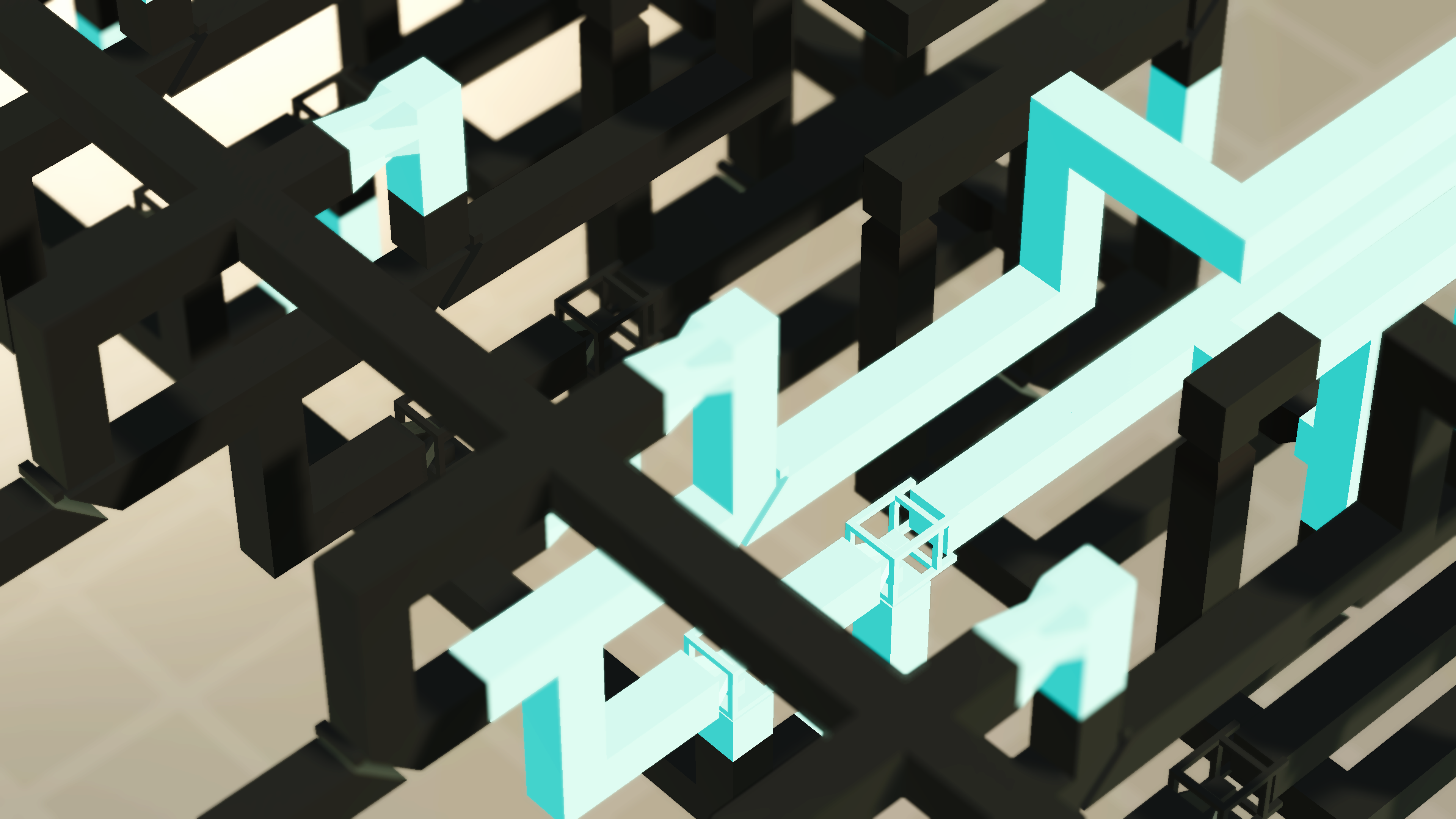
This project is my personal research / artistic work that I have been working since / for graduating. It was heavily inspired by a two week workshop by Ralf Baecker 1 and the result of that workshop is the Minecraft computer
The following text describes the first version of the installation. I have recently started a second version of the project. Motivated by the fact that a physical installation has a very limited reach, and something called the pandemic happened, I have decided to try and create a gamified version of concept. Updates of my progress are available on my Instagram 2
Immersive computing practically is a fully transparent computer or processor. It shows the visitor the inner working of the most central part of the computer. Aside from that it uses storytelling elements to give more insight into the functionality of a processor and how this relates to people's everyday experience with computers.
The processor is presented in Virtual Reality in order to create a feeling of presence and physicality. Visitors are able to get a physical experience of the computational processes that are happening in front of them.
What is it?

The installation consists of a 50cm x 50cm x 200cm frame with sides that could be held which would can be used to interact with the computer and surrounding installation. On the top the computer was housed and displayed in the rawest form it could be whilst still operational.
Metadata
- type
- Installation, Augment Reality Installation
- role
- Designer, Developer, Researcher
- duration
- 2016 — 2020
- stack
- Unity, C#, HTC Vive
- exhibits
- Arnhemse Nieuwe 2017, Gogbot Enschede 2017
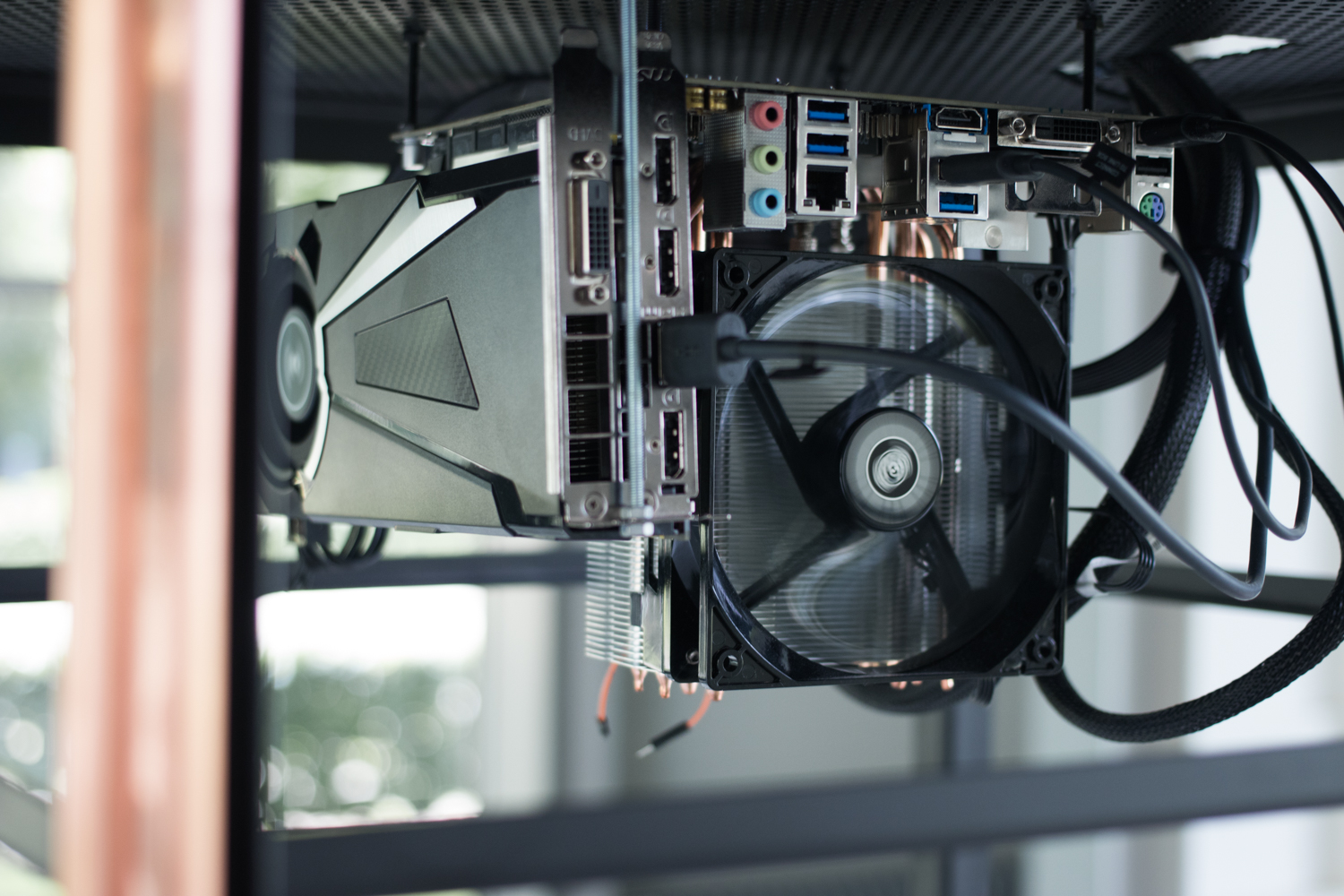
People could walk up to the installation and pick up the headset. Putting on the headset revealed a simplified version of the space around them. They are then presented with the computer first, followed by a series of interactive steps explaining how the different building blocks of the computer operate. They walk around and if they finished a chapter they switch sides.
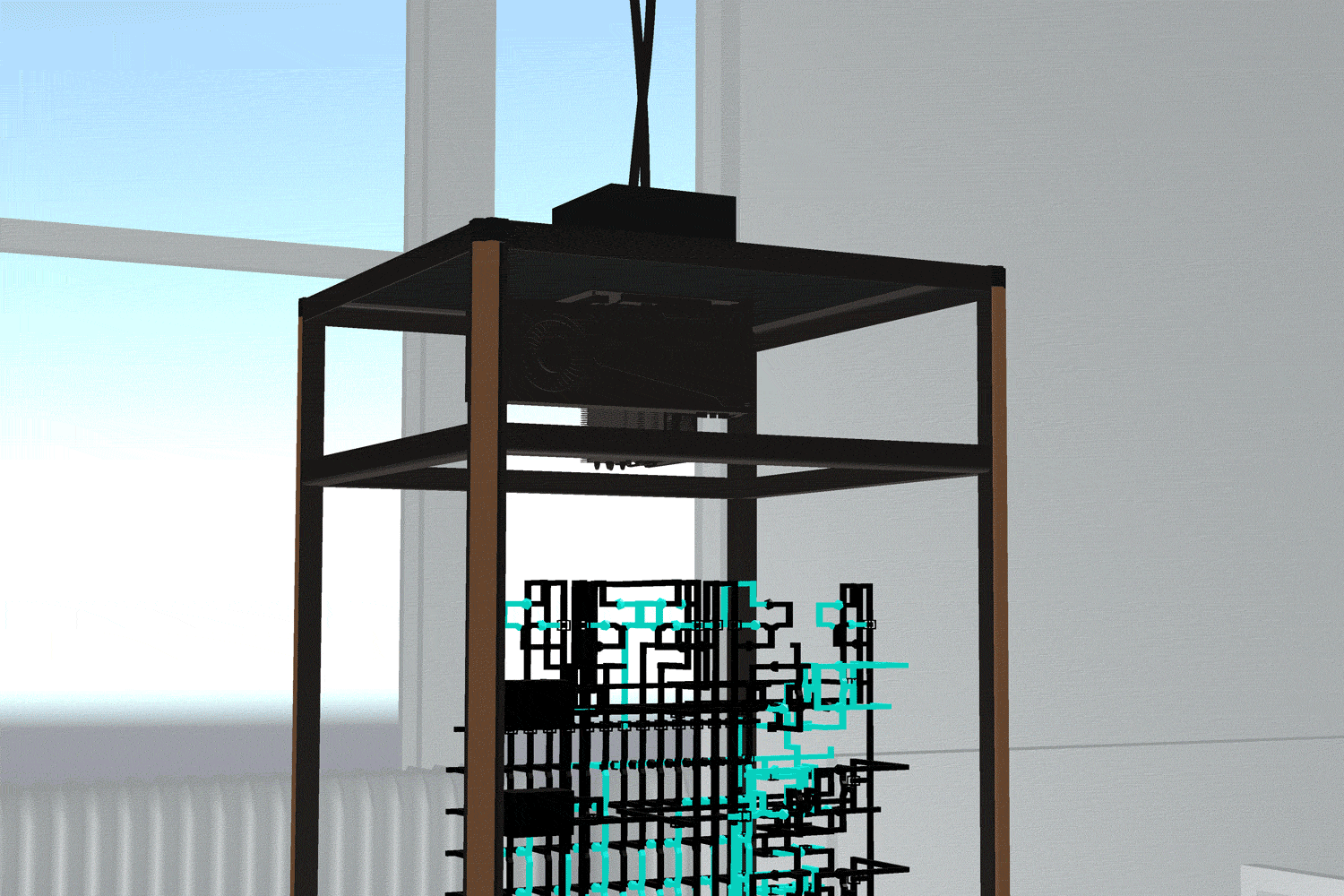
The installation consisted of the frame and was accompanied by two ceiling-mountable stands that would carry the lighthouse stations for tracking. Alignment between the digital computer and the physical installation was done manually.
The concept I think is still delightfully simple to explain even though the work goes quite in-depth:
In the last 25 years the computer has taken over everyday life. Computers have given us a lot of new possibilities, especially combined with the internet. But every computer that you will run into is a black box, or rather, a tiny microchip somewhere in the housing packed in between a screen, keyboard, and other extensions. This means that most people have a very abstract relationship to computing. Which is weird because in its essence it is a very physical process. Immersive computing tries to expose this physicality by being a completely transparent computer. It is manipulatable in real time and every part of the computing logic is exposed. Hopefully the work can give people some insight into how computing happens and why it sometimes differs from our non-digital experiences.
